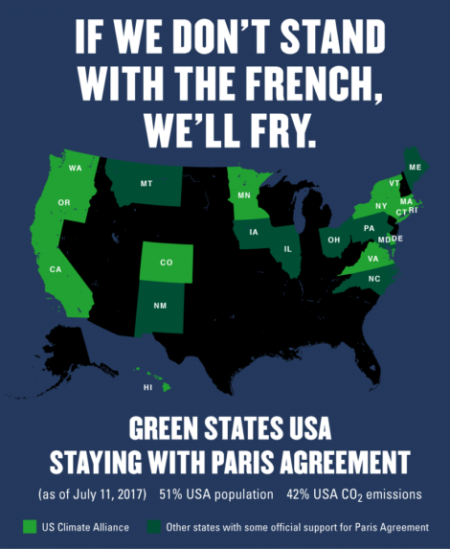September 23, 2017 – The United States Climate Alliance represents states united for climate action. Founded in response to President Trump’s decision to withdraw from the Paris Climate Agreement, this coalition is committed to reducing greenhouse gas emissions (GHGs) to meet or exceed the targeted goals set in Paris in 2015.
Its principles include:
- State leadership on climate change
- State action on climate to benefit citizens and strengthen economies
- State commitments to global well-being
The Alliance’s current membership includes 14 U.S. states, and Puerto Rico, and contains 36% of all Americans, produces $7 trillion in GDP, and has generated 1.3 million in clean energy jobs. Collectively, Alliance members have reduced GHG emissions by 15% between 2005 and 2015. They have achieved this without negatively impacting their economies and have actually outperformed non-members over the ten-year period. And by 2025, based on current policies, they project a combined 24-29% reduction in GHGs which meets the U.S. target commitments made in Paris.
Current membership includes California, Colorado, Connecticut, Delaware, Hawaii, Massachusetts, Minnesota, New York, North Carolina, Oregon, Puerto Rico, Rhode Island, Vermont, Virginia, and Washington.
The Alliance is launching cross-state collaboration to accelerate clean energy deployment and transform the U.S. economy within their jurisdictions to tackle climate change through developing mitigation and adaptation strategies. The group may soon be joined by other states that have expressed support for the Paris Climate Agreement. These include Illinois, Iowa, Maine, Maryland, Montana, New Mexico, and Ohio.
Best summed up as to why all of these jurisdictions have committed to Paris, I quote from one of the governors, Jay Inslee of Washington:
“Those of us who understand the science and feel the urgency of protecting our children’s air and water are as united as ever in confronting one of the greatest challenges of our lifetime.”









